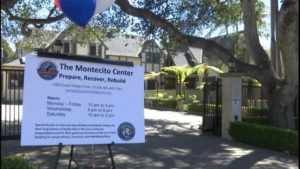As summer temperatures rise and humidity sinks, California braces for wildfires. At the time of this writing, ten fires are active in several parts of the state. The County Fire, which affected Napa and Yolo counties, is the largest of the season so far with over 90,000 acres burned and is at 83% containment. Other fires in Southern California are mostly contained, while the Klamathon Fire, which has crossed into Oregon, is only 30% contained. These catastrophes have become part of California life, upending the lives of those in the flames’ path.
Needless to say, wildfires and other disasters can have deep and lasting impacts on local businesses – even when those aren’t directly affected during the emergency. According to FEMA, 40-60% of small businesses never reopen after a disaster. Being properly prepared can help them avert those outcomes. It is essential to have disaster recovery plans in place before an emergency, as well as a plan to diversify business offerings and revenue streams. After the 2017 North Bay Wildfires, the Sonoma County Economic Development Board found that businesses that exported to customers away from disaster areas were less impacted. Businesses that provide goods and services in response to a catastrophe can see an increase in sales.
As was discussed during CAMEO’s 2018 Annual Member Meeting, the work of nonprofits in our field can be extremely important during and after a natural disaster. Often, entrepreneurs and small business owners are unfamiliar with emergency protocols and have a hard time navigating disaster insurance claims. Many other times, they aren’t even aware they can be eligible for grants and loans allocated to disaster recovery. That’s where we come in. Our organizations can provide financial analysis and support, educate businesses about loan options, and launch campaigns to bring customers back to disaster-affected areas. One such organization leading business recovery efforts is our member, Women’s Economic Ventures (WEV).

After the Thomas Fire and Montecito Debris Flows last winter, the Santa Barbara business community was devastated. According to a UCSB economic impact survey, more than 60% of businesses were forced to close during or after the disasters, some for longer than two months. More than 200 employees were laid off. With its expertise in entrepreneur training, consulting, and loans, WEV was in a unique position to help their local community. They added staff and increased capacity to help impacted businesses rebuild their operations and be better prepared for future emergencies. To date, they have supported dozens of businesses and provided hundreds of thousands of dollars in loans:
- Supported 17 businesses with WEV emergency business loans
- Provided a total of $161,000 in emergency loans
- Deferred existing loan payments for 8 businesses
- Supported 31 businesses with one-on-one business consulting
As many businesses are still recovering, WEV continues to serve the community by offering advice and services. Their work is proof of the impact that business assistance nonprofits have on entire communities. They’ve also devised a disaster plan for themselves. Airlines say put your oxygen mask on before you help others. Same applies, here: in order to best serve your clients, you need a disaster recovery plan for your organization.
Additionally, the U.S. Small Business Administration has a program to help small business owners recover from disasters. The SBA 7(a) Loan Program offers the Express Bridge Loan Pilot Program, a streamlined product available through existing SBA Express Lenders. This Pilot Program was authorized on October 16, 2017 and is available through September 30, 2020. SBA 7(a) Lenders that do not already participate in the SBA Express program are encouraged to contact their local SBA District Office to find out how to participate before a disaster is declared.
This Pilot Program is available for SBA Express Lenders to provide immediate loans up to $25,000 with a 50% SBA guaranty for small businesses located in the counties affected by a Presidentially-declared disaster. An important part of recovery is the availability of immediate cash to assist with rebuilding and operations while awaiting long-term disaster financing.
